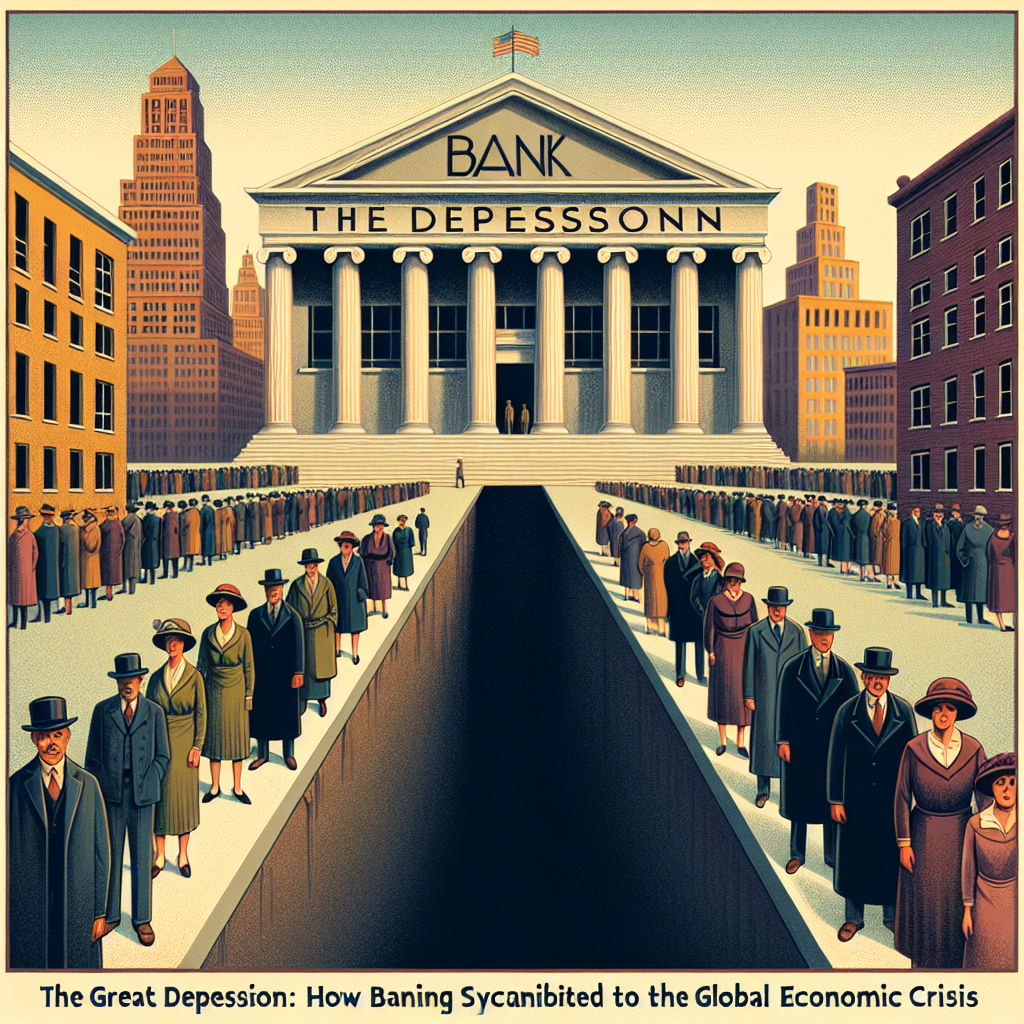The Great Depression: How Banking Systems Contributed to the Global Economic Crisis
The Great Depression remains one of the most catastrophic economic events in modern history. While many factors contributed to this unprecedented slump, the banking systems played a pivotal role. Let’s delve into how banking practices and policies exacerbated the global economic crisis.
The Prologue: A Time of Overconfidence
In the roaring 1920s, confidence in the booming economy was at an all-time high. Banks were only too happy to fuel this optimism. They offered easy credit to individuals and businesses alike, encouraging rapid growth and speculative investments in stock markets.
- Easy access to loans led to inflated asset prices.
- Over-leveraging became common practice among borrowers.
- Banks themselves invested heavily in the stock market.
The Stock Market Crash of 1929: The Beginning of the End
When the stock market crashed in October 1929, it sent shockwaves through the financial system. Overleveraged banks faced massive losses as borrowers defaulted en masse.
Many banks had to liquidate their assets to cover these losses, further driving down prices and feeding into the downward spiral. The collapse of the banking sector rapidly turned a stock market crash into a full-blown economic depression.
Bank Runs and Closures: Erosion of Public Confidence
The situation worsened as panic spread among the public. People feared losing their life savings, leading to bank runs—where thousands of customers simultaneously withdrew their deposits. This drained the banks of their cash reserves, causing many to shutter their doors permanently.
- Bank runs depleted banks’ liquidity.
- Thousands of banks failed within a few years.
- The public lost faith in the banking system.
The Federal Reserve’s Policies: A Double-Edged Sword
The Federal Reserve, established to oversee the country’s monetary system, plays a crucial role during economic fluctuations. However, its actions following the crash were less than helpful.
- The Fed raised interest rates to curb speculation, making loans more expensive and inaccessible.
- This policy further squeezed an already credit-starved economy.
- Deflationary pressures set in, leading to falling prices and wages.
International Impact: A Global Crisis
The interconnected nature of global banking meant that the crisis quickly spread beyond U.S. borders. International loans and trade agreements faltered, causing an economic ripple effect.
Countries reliant on U.S. credit faced financial hardship, leading to a worldwide depression. The gold standard, which many nations adhered to, only exacerbated the issue by limiting their ability to adjust monetary policies.
Lessons Learned and Banking Reforms
The Great Depression unveiled severe vulnerabilities in the global banking system, leading to sweeping reforms aimed at preventing similar future crises. Some key lessons and reforms included:
- The establishment of the Federal Deposit Insurance Corporation (FDIC) to instill confidence in banking stability.
- Stricter regulations on banking activities to prevent reckless lending and investment practices.
- Enhanced oversight by central banks to mitigate systemic risk.
Conclusion: History as a Teacher
The Great Depression serves as a stark reminder of the integral role that banking systems play in the health of the global economy. By understanding the mistakes of the past, we are better equipped to safeguard against future economic catastrophes.
The tales of booming economies turning to bust may seem distant, but they carry timeless lessons. And remember, next time you stroll past a bank, give it a nod. It’s holding more than just your money; it’s holding the threads of our economic future.
So, keep learning, stay curious, and always remember—history has much to teach us!
